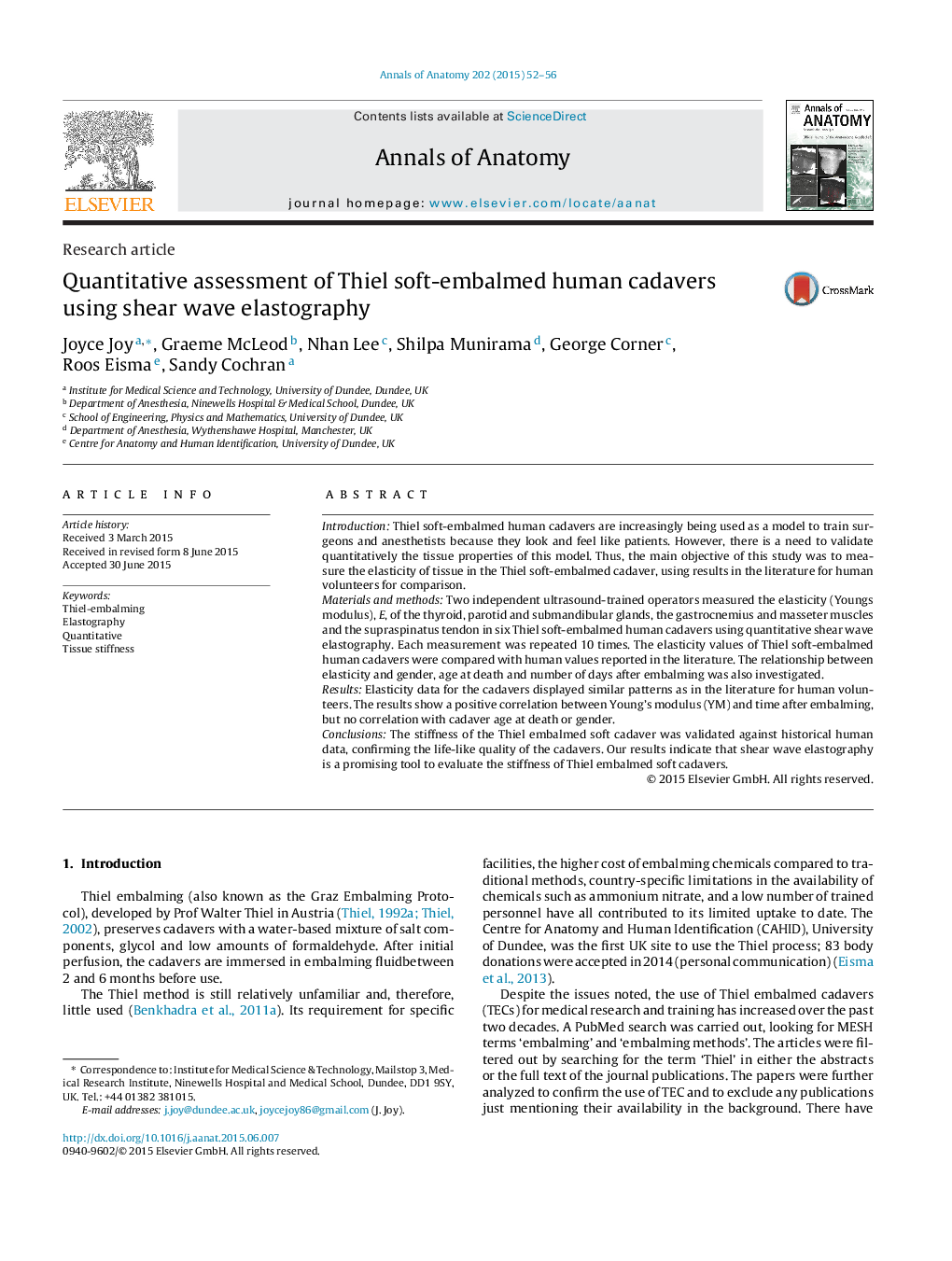| Article ID | Journal | Published Year | Pages | File Type |
|---|---|---|---|---|
| 8460909 | Annals of Anatomy - Anatomischer Anzeiger | 2015 | 5 Pages |
Abstract
IntroductionThiel soft-embalmed human cadavers are increasingly being used as a model to train surgeons and anesthetists because they look and feel like patients. However, there is a need to validate quantitatively the tissue properties of this model. Thus, the main objective of this study was to measure the elasticity of tissue in the Thiel soft-embalmed cadaver, using results in the literature for human volunteers for comparison.Materials and methodsTwo independent ultrasound-trained operators measured the elasticity (Youngs modulus), E, of the thyroid, parotid and submandibular glands, the gastrocnemius and masseter muscles and the supraspinatus tendon in six Thiel soft-embalmed human cadavers using quantitative shear wave elastography. Each measurement was repeated 10 times. The elasticity values of Thiel soft-embalmed human cadavers were compared with human values reported in the literature. The relationship between elasticity and gender, age at death and number of days after embalming was also investigated.ResultsElasticity data for the cadavers displayed similar patterns as in the literature for human volunteers. The results show a positive correlation between Young's modulus (YM) and time after embalming, but no correlation with cadaver age at death or gender.ConclusionsThe stiffness of the Thiel embalmed soft cadaver was validated against historical human data, confirming the life-like quality of the cadavers. Our results indicate that shear wave elastography is a promising tool to evaluate the stiffness of Thiel embalmed soft cadavers.
Related Topics
Life Sciences
Biochemistry, Genetics and Molecular Biology
Cell Biology
Authors
Joyce Joy, Graeme McLeod, Nhan Lee, Shilpa Munirama, George Corner, Roos Eisma, Sandy Cochran,
